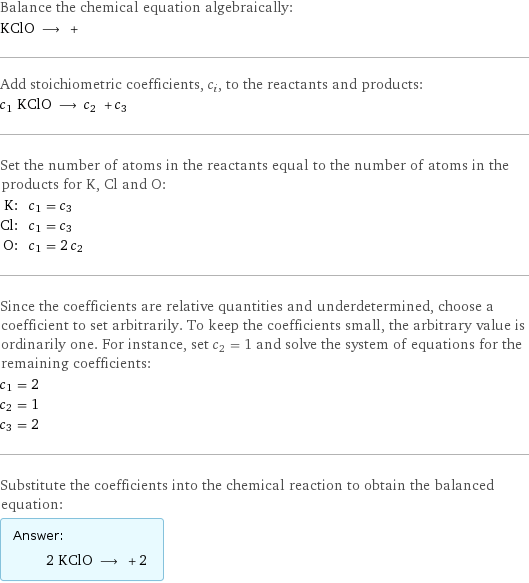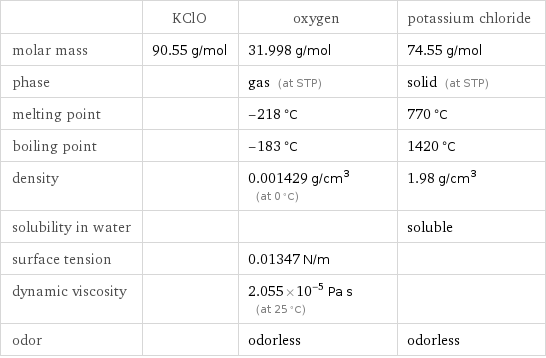Input interpretation

KClO ⟶ oxygen + potassium chloride
Balanced equation

Balance the chemical equation algebraically: KClO ⟶ + Add stoichiometric coefficients, c_i, to the reactants and products: c_1 KClO ⟶ c_2 + c_3 Set the number of atoms in the reactants equal to the number of atoms in the products for K, Cl and O: K: | c_1 = c_3 Cl: | c_1 = c_3 O: | c_1 = 2 c_2 Since the coefficients are relative quantities and underdetermined, choose a coefficient to set arbitrarily. To keep the coefficients small, the arbitrary value is ordinarily one. For instance, set c_2 = 1 and solve the system of equations for the remaining coefficients: c_1 = 2 c_2 = 1 c_3 = 2 Substitute the coefficients into the chemical reaction to obtain the balanced equation: Answer: | | 2 KClO ⟶ + 2
Structures

KClO ⟶ +
Names

KClO ⟶ oxygen + potassium chloride
Chemical names and formulas

| KClO | oxygen | potassium chloride formula | KClO | | Hill formula | ClKO | O_2 | ClK name | | oxygen | potassium chloride IUPAC name | | molecular oxygen | potassium chloride
Substance properties

| KClO | oxygen | potassium chloride molar mass | 90.55 g/mol | 31.998 g/mol | 74.55 g/mol phase | | gas (at STP) | solid (at STP) melting point | | -218 °C | 770 °C boiling point | | -183 °C | 1420 °C density | | 0.001429 g/cm^3 (at 0 °C) | 1.98 g/cm^3 solubility in water | | | soluble surface tension | | 0.01347 N/m | dynamic viscosity | | 2.055×10^-5 Pa s (at 25 °C) | odor | | odorless | odorless
Units
